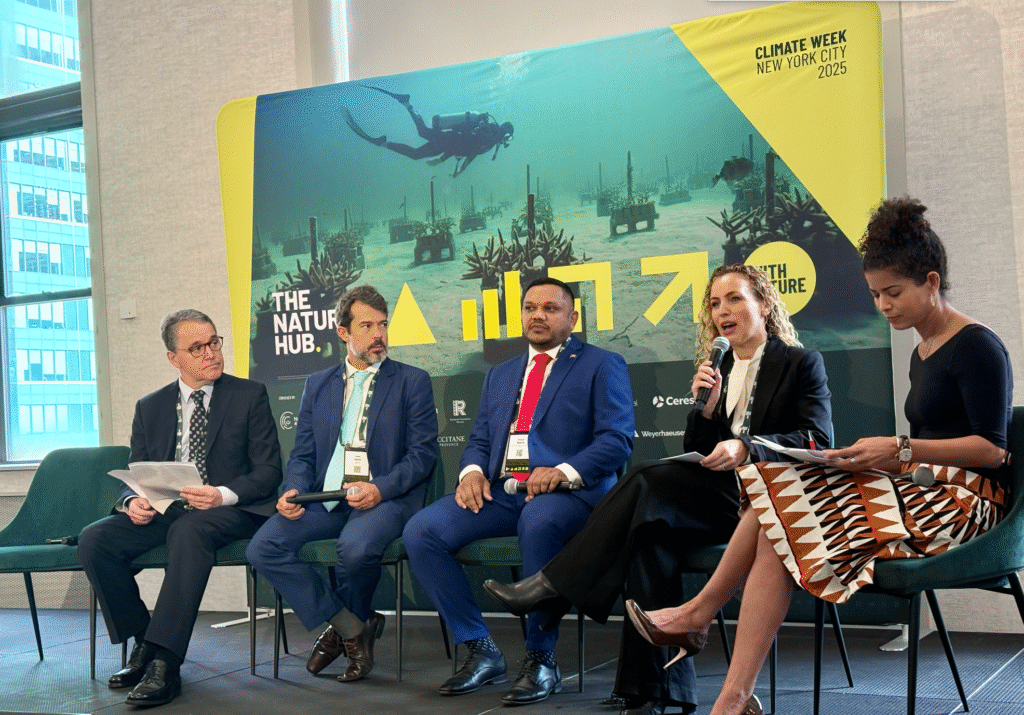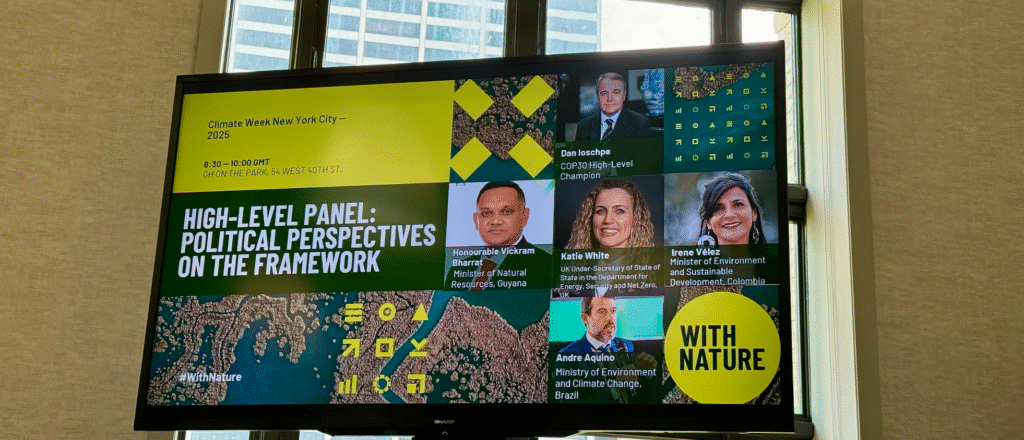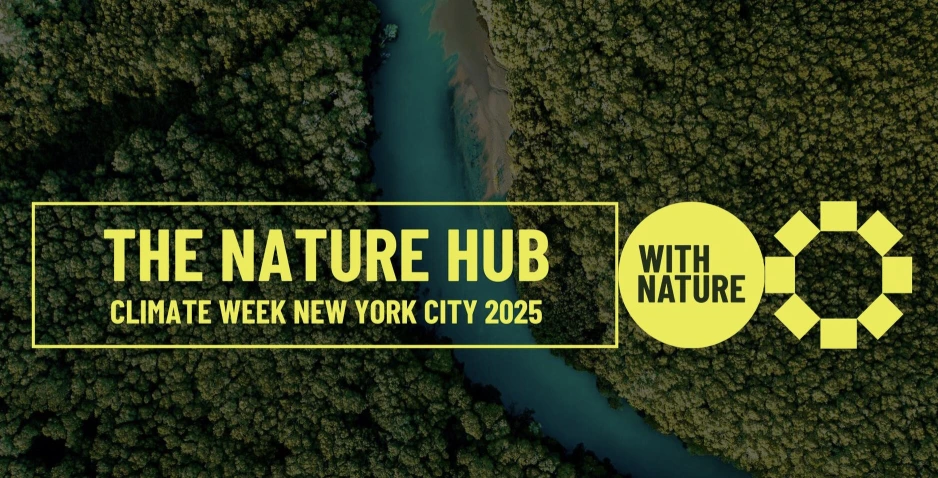(To see our photos and videos, check out our Instagram and LinkedIn).
New York, September 23, 2025 – As the world counts down to COP30 in Belém, forests have once again taken center stage at Climate Week NYC 2025. Against the iconic skyline of Manhattan, a coalition of 34 governments from both the Global North and South launched the Forest Finance Roadmap for Action — a groundbreaking framework designed to close the $66.8 billion annual finance gap needed to halt and reverse tropical deforestation by 2030.
This initiative, led by the Forest & Climate Leaders’ Partnership (FCLP) in collaboration with the Government of Brazil and supported by the United Nations Environment Programme (UNEP), represents the first time such a broad coalition has aligned around a shared vision for mobilizing and coordinating forest finance at scale. The Roadmap is more than a declaration — it is a six-point action plan, ready to be implemented, and aligned with the COP30 Action Agenda.
A $66.8 Billion Challenge
UNEP’s new analysis released alongside the Roadmap paints a sobering picture: tropical countries require nearly $67 billion in annual investment to keep forests standing, protect biodiversity, and meet the Glasgow Leaders’ Declaration goal of halting and reversing forest loss by 2030.
Yet today, only a fraction of that funding is flowing. Forest-rich nations and local communities are bearing the brunt of deforestation pressures without the reliable and predictable finance they need to make long-term choices. As Guyana’s Minister of Natural Resources, Vickram Bharrat, reminded the audience: “Stability of finance is the bridge between ambition and action.”
Six Solutions to Transform Forest Finance
The Forest Finance Roadmap offers a menu of six solutions, each with the potential to unlock billions of dollars annually by 2030. Together, they aim not only to preserve forests but also to demonstrate that conservation and economic development are complementary, not competing, objectives.
- Expand jurisdictional-scale forest carbon credits (JREDD+)
Voluntary and compliance carbon markets could channel $3–6 billion annually into high-integrity forest protection. - Launch the Tropical Forests Forever Facility (TFFF)
A bold new mechanism designed to provide long-term, stable payments for standing forests, with potential to generate up to $4 billion annually. - Accelerate the forest bioeconomy
Investing $5 billion in concessional finance could unlock $15 billion annually for sustainable enterprises — from agroforestry to nature-based products — creating jobs and livelihoods while keeping forests intact. - Redirect supply chain finance
Aligning agricultural and private sector finance with forest goals could mobilize $10 billion annually, especially through stronger disclosure of deforestation-related risks. - Mobilize public finance through fiscal reforms
Shifting subsidies and national budgets toward sustainable land use could free up $8 billion per year. - Leverage sovereign debt for resilience
Redirecting just 1% of current debt service payments could generate $4.9 billion annually for forests by 2030.
Conservative estimates suggest these solutions combined could make significant progress in closing the forest finance gap — and with greater innovation, the numbers could be even higher.


Proof of Concept: Countries Leading the Way
Several countries are already demonstrating that these solutions are possible:
- Costa Rica and Guyana are channeling revenue from carbon credits into conservation and Indigenous community support.
- Kenya is pioneering the use of sustainable wood in green construction for low-carbon, resilient development.
- Brazil’s Plano Safra rural credit program rewards producers who adopt sustainable agricultural practices.
- Uruguay has launched the world’s first Deforestation-Linked Sovereign Bond, tying financial performance to forest conservation KPIs.
The private sector is also stepping up. At Climate Week, the Brazil Restoration and Bioeconomy Finance Coalition announced $4.5 billion in commitments for forest restoration and bioeconomy projects.
From Commitments to Action
What makes this Roadmap historic is not only its ambition but also its inclusiveness. By bringing together governments, businesses, and civil society, it recognizes that halting deforestation is not a burden to bear but an opportunity to seize.
As UK Climate Minister Katie White stated: “Forests are the lifeblood of our planet — supporting food security, tackling climate change, and protecting biodiversity. This framework aligns global efforts and will unlock finance at scale.”
With five years left until 2030, the Roadmap sets the stage for Belém’s COP30, where the world will judge progress against the promises made in Glasgow. The message from New York is clear: solutions exist, the finance is within reach, and the time to act is now.
Looking Ahead
The Forest Finance Roadmap for Action is more than a financial framework. It is a vision for a future where forests are valued not only for the carbon they store but for the livelihoods, cultures, and biodiversity they sustain.
If governments follow through — aligning fiscal policies, managing debt responsibly, and scaling up private investment — then Climate Week NYC 2025 may be remembered as the moment when forest finance finally moved from rhetoric to reality.
Follow the links: Unlocking Forest Finance Roadmap & The Forest and Climate Leaders Partnership.

